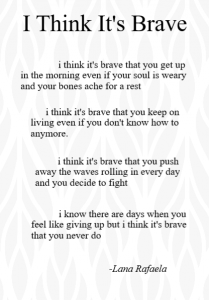Hope, Healing, & Wellness

You carry so much love in your heart. Give some to yourself.
Trauma and stress can impact our physical and emotional health, and our ability to be self-compassionate. We carry tension in our bodies, trauma and stress impacts things like blood pressure, sleep, and our immune system, and physical ailments can impact our emotional state.
“After trauma the world is experienced with a different nervous system. The survivor’s energy now becomes focused on suppressing inner chaos, at the expense of spontaneous involvement in their lives. These attempts to maintain control over unbearable physiological reactions can result in a whole range of physical symptoms, including fibromyalgia, chronic fatigue, and other autoimmune diseases. This explains why it is critical for trauma treatment to engage the entire organism, body, mind, and brain.”
― Bessel A. van der Kolk, The Body Keeps the Score: Brain, Mind, and Body in the Healing of Trauma
The process of healing is different for every person, this page includes strategies for dealing with common feelings reported by those recovering from all kinds of trauma. On this page, you’ll find lots of tools related to wellness and healing like gentle movement, mindfulness exercises, and some cute animal videos, because they are scientifically proven to lift our moods.
Sometimes it can be hard to believe the good things about ourselves, or that we are worth prioritizing. Some of the exercises on this page may feel hollow and forced the first time you do them. However, the more self-compassion we can extend to ourselves (even when we’re not really ‘feeling it’) the easier it becomes to believe the good things.
On This Page:
Panic, Anxiety, & Out-of-Body Feelings Self-Criticism & Impatience Feeling Disconnected from Your Body Shame, Self-Blame, Hopelessness
Panic, Anxiety, & Out-of-Body Feelings
People who have lived through scary, painful, violent, or traumatic events often report feelings of panic or anxiety. Sometimes these feelings are unexpected or seem to come out of nowhere. These feelings can also include flashbacks, memories of the trauma, or ‘out-of-body’ feelings. Grounding techniques can help to calm these feelings and make you feel more present. You can also use these simple skills during stressful moments to help you stay calm and in control.
- Take five to ten deep breaths through your nose, exhale slowly through puckered lips.
- Place both feel flat on the floor. Wiggle your toes, curl and uncurl your toes several times. Spend a moment noticing the sensations in your feet, including the pressure of your feet against the floor.
- Clench your hands into fists and then release them slowly, do this five to ten times.
- Rub your palms together briskly, notice the sound and the feeling of warmth.
- Name all of the objects you can see.
- Describe the steps in doing an activity you know how to do well. For example, how to tie your shoes, drive to the store, or cook your favorite meal.
- Spell your full name and the names of three other people backwards.
- Pick an object and draw it in your mind in detail, like your house, car, or a favorite pet.
You can pick and choose which of these exercises work best for you, and combine them to make a grounding practice that works for you. You can find more grounding techniques here.
Self-Criticism & Impatience
This exercise focuses your attention on cultivating love and patience for yourself .
Step 1. Sit in a comfortable position, lowering your gaze or closing your eyes.
Step 2. Breathe deeply a few times. When your attention is steady repeat the following
words in your mind with each breath: “Breathing in, I breathe love for myself. Breathing
out, I breathe patience for myself.” Do this for 1 minute.
Step 3. Finally, take three breaths, repeating these thoughts in your mind: “Breathing in, I
am an embodiment of love. Breathing out, I am an embodiment of patience.”
Adapted from the book Real World Mindfulness for Beginners edited by Brenda Salgado
Feeling Disconnected from Your Body
Never trust your fears. They don’t know your strength.
Trauma stays in the body, not just the mind. The following resources invite you to reconnect to your body using gentle movement and breathing.
 Shame, Self-Blame, Hopelessness
Shame, Self-Blame, Hopelessness
This practice reminds us that we are part of a greater human family, and to recognize our inherent worth. Find a quiet place where you can be comfortable.
STEP 1. As you breathe, slowly speak or think the following words: “I am loved. I am a blessing. I am sacred just the way I am. I have dignity, wisdom, and gifts for the whole.” Repeat three to five times.
STEP 2. Visualize someone you love and say or think these words: “You are loved. You are a blessing. You are sacred just the way you are. You have dignity, wisdom, and gifts for the whole.” Repeat three to five times.
STEP 3. Think of the many people experiencing suffering in the world and say or
think these words: “You are loved. You are a blessing. You are sacred just the way
you are. You have dignity, wisdom, and gifts for the whole.” Repeat three to five
times.
If you find it difficult to say these words at first, start with just step 1 and allow the
words to sink in over the course of the week. It’s okay to fake it until you make it!
Adapted from the book Real World Mindfulness for Beginners edited by Brenda Salgado



